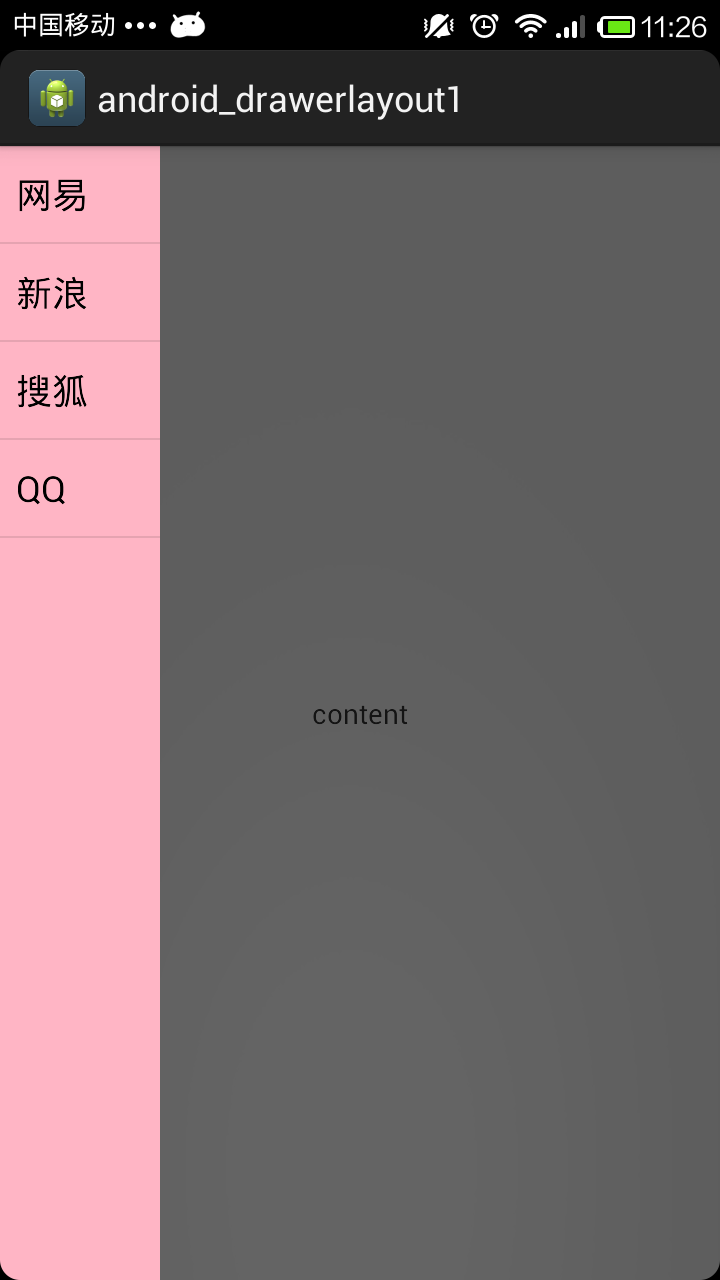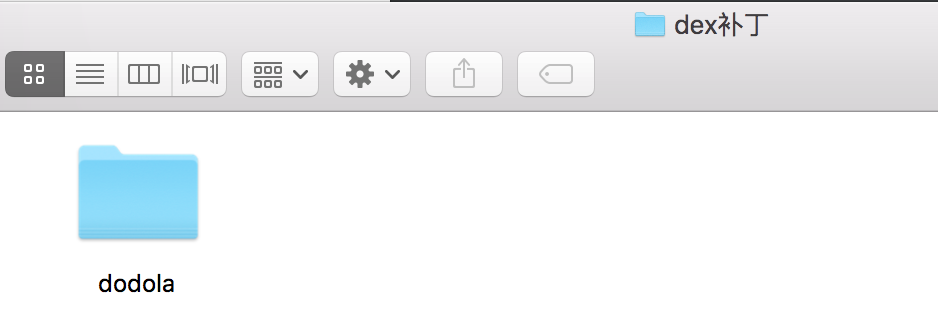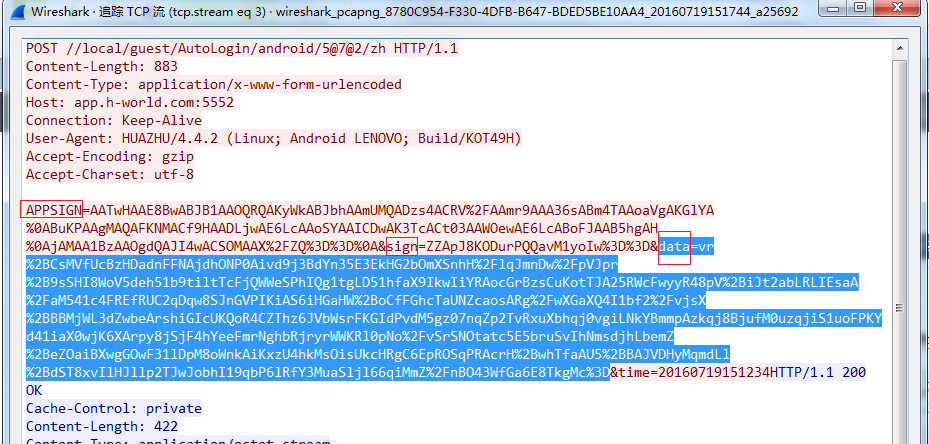編輯:關於Android編程
在開發Android應用程序時,如果需要使用系統提供的服務,可以通過服務名稱調用山下文的getSystemService(String name)來獲取服務管理者,那麼該函數是如何實現服務查詢的呢?
frameworks\base\core\java\android\app\ContextImpl.java
public Object getSystemService(String name) {
ServiceFetcher fetcher = SYSTEM_SERVICE_MAP.get(name);
return fetcher == null ? null : fetcher.getService(this);
}SYSTEM_SERVICE_MAP被定義為HashMap類型變量,該變量以服務名稱—ServiceFetcher對象這種鍵值對的方式保存了一系列系統服務管理對象,該變量定義為靜態類型,因此在ContextImpl類加載時,該變量就已經創建,同時在ContextImpl類中通過Static塊語句來初始化SYSTEM_SERVICE_MAP變量:
static {
registerService(ACCESSIBILITY_SERVICE, new ServiceFetcher() {
public Object getService(ContextImpl ctx) {
return AccessibilityManager.getInstance(ctx);
}});
registerService(ACCOUNT_SERVICE, new ServiceFetcher() {
public Object createService(ContextImpl ctx) {
IBinder b = ServiceManager.getService(ACCOUNT_SERVICE);
IAccountManager service = IAccountManager.Stub.asInterface(b);
return new AccountManager(ctx, service);
}});
if (SystemProperties.getBoolean("universe_ui_support",false)) {
registerService(THEME_SERVICE, new ServiceFetcher() {
public Object createService(ContextImpl ctx) {
IBinder b = ServiceManager.getService(THEME_SERVICE);
IThemeManager service = IThemeManager.Stub.asInterface(b);
return new ThemeManager(ctx, service);
}});
}
registerService(ACTIVITY_SERVICE, new ServiceFetcher() {
public Object createService(ContextImpl ctx) {
return new ActivityManager(ctx.getOuterContext(), ctx.mMainThread.getHandler());
}});
registerService(ALARM_SERVICE, new StaticServiceFetcher() {
public Object createStaticService() {
IBinder b = ServiceManager.getService(ALARM_SERVICE);
IAlarmManager service = IAlarmManager.Stub.asInterface(b);
return new AlarmManager(service);
}});
registerService(AUDIO_SERVICE, new ServiceFetcher() {
public Object createService(ContextImpl ctx) {
return new AudioManager(ctx);
}});
registerService(MEDIA_ROUTER_SERVICE, new ServiceFetcher() {
public Object createService(ContextImpl ctx) {
return new MediaRouter(ctx);
}});
registerService(CLIPBOARD_SERVICE, new ServiceFetcher() {
public Object createService(ContextImpl ctx) {
return new ClipboardManager(ctx.getOuterContext(),
ctx.mMainThread.getHandler());
}});
registerService(CONNECTIVITY_SERVICE, new StaticServiceFetcher() {
public Object createStaticService() {
IBinder b = ServiceManager.getService(CONNECTIVITY_SERVICE);
return new ConnectivityManager(IConnectivityManager.Stub.asInterface(b));
}});
registerService(COUNTRY_DETECTOR, new StaticServiceFetcher() {
public Object createStaticService() {
IBinder b = ServiceManager.getService(COUNTRY_DETECTOR);
return new CountryDetector(ICountryDetector.Stub.asInterface(b));
}});
registerService(DEVICE_POLICY_SERVICE, new ServiceFetcher() {
public Object createService(ContextImpl ctx) {
return DevicePolicyManager.create(ctx, ctx.mMainThread.getHandler());
}});
registerService(DOWNLOAD_SERVICE, new ServiceFetcher() {
public Object createService(ContextImpl ctx) {
return new DownloadManager(ctx.getContentResolver(), ctx.getPackageName());
}});
registerService(NFC_SERVICE, new ServiceFetcher() {
public Object createService(ContextImpl ctx) {
return new NfcManager(ctx);
}});
registerService(DROPBOX_SERVICE, new StaticServiceFetcher() {
public Object createStaticService() {
return createDropBoxManager();
}});
registerService(INPUT_SERVICE, new StaticServiceFetcher() {
public Object createStaticService() {
return InputManager.getInstance();
}});
registerService(INPUT_METHOD_SERVICE, new ServiceFetcher() {
public Object createService(ContextImpl ctx) {
return InputMethodManager.getInstance(ctx);
}});
registerService(TEXT_SERVICES_MANAGER_SERVICE, new ServiceFetcher() {
public Object createService(ContextImpl ctx) {
return TextServicesManager.getInstance();
}});
registerService(KEYGUARD_SERVICE, new ServiceFetcher() {
public Object getService(ContextImpl ctx) {
// TODO: why isn't this caching it? It wasn't
// before, so I'm preserving the old behavior and
// using getService(), instead of createService()
// which would do the caching.
return new KeyguardManager();
}});
registerService(LAYOUT_INFLATER_SERVICE, new ServiceFetcher() {
public Object createService(ContextImpl ctx) {
return PolicyManager.makeNewLayoutInflater(ctx.getOuterContext());
}});
registerService(LOCATION_SERVICE, new ServiceFetcher() {
public Object createService(ContextImpl ctx) {
IBinder b = ServiceManager.getService(LOCATION_SERVICE);
return new LocationManager(ctx, ILocationManager.Stub.asInterface(b));
}});
registerService(NETWORK_POLICY_SERVICE, new ServiceFetcher() {
@Override
public Object createService(ContextImpl ctx) {
return new NetworkPolicyManager(INetworkPolicyManager.Stub.asInterface(
ServiceManager.getService(NETWORK_POLICY_SERVICE)));
}
});
registerService(NOTIFICATION_SERVICE, new ServiceFetcher() {
public Object createService(ContextImpl ctx) {
final Context outerContext = ctx.getOuterContext();
return new NotificationManager(
new ContextThemeWrapper(outerContext,
Resources.selectSystemTheme(0,
outerContext.getApplicationInfo().targetSdkVersion,
com.android.internal.R.style.Theme_Dialog,
com.android.internal.R.style.Theme_Holo_Dialog,
com.android.internal.R.style.Theme_DeviceDefault_Dialog)),
ctx.mMainThread.getHandler());
}});
registerService(NSD_SERVICE, new ServiceFetcher() {
@Override
public Object createService(ContextImpl ctx) {
IBinder b = ServiceManager.getService(NSD_SERVICE);
INsdManager service = INsdManager.Stub.asInterface(b);
return new NsdManager(ctx.getOuterContext(), service);
}});
// Note: this was previously cached in a static variable, but
// constructed using mMainThread.getHandler(), so converting
// it to be a regular Context-cached service...
registerService(POWER_SERVICE, new ServiceFetcher() {
public Object createService(ContextImpl ctx) {
IBinder b = ServiceManager.getService(POWER_SERVICE);
IPowerManager service = IPowerManager.Stub.asInterface(b);
return new PowerManager(service, ctx.mMainThread.getHandler());
}});
registerService(SEARCH_SERVICE, new ServiceFetcher() {
public Object createService(ContextImpl ctx) {
return new SearchManager(ctx.getOuterContext(),
ctx.mMainThread.getHandler());
}});
registerService(SENSOR_SERVICE, new ServiceFetcher() {
public Object createService(ContextImpl ctx) {
return new SystemSensorManager(ctx.mMainThread.getHandler().getLooper());
}});
registerService(STATUS_BAR_SERVICE, new ServiceFetcher() {
public Object createService(ContextImpl ctx) {
return new StatusBarManager(ctx.getOuterContext());
}});
registerService(STORAGE_SERVICE, new ServiceFetcher() {
public Object createService(ContextImpl ctx) {
try {
return new StorageManager(ctx.mMainThread.getHandler().getLooper());
} catch (RemoteException rex) {
Log.e(TAG, "Failed to create StorageManager", rex);
return null;
}
}});
registerService(TELEPHONY_SERVICE, new ServiceFetcher() {
public Object createService(ContextImpl ctx) {
return new TelephonyManager(ctx.getOuterContext());
}});
registerService(THROTTLE_SERVICE, new StaticServiceFetcher() {
public Object createStaticService() {
IBinder b = ServiceManager.getService(THROTTLE_SERVICE);
return new ThrottleManager(IThrottleManager.Stub.asInterface(b));
}});
registerService(UI_MODE_SERVICE, new ServiceFetcher() {
public Object createService(ContextImpl ctx) {
return new UiModeManager();
}});
registerService(USB_SERVICE, new ServiceFetcher() {
public Object createService(ContextImpl ctx) {
IBinder b = ServiceManager.getService(USB_SERVICE);
return new UsbManager(ctx, IUsbManager.Stub.asInterface(b));
}});
registerService(SERIAL_SERVICE, new ServiceFetcher() {
public Object createService(ContextImpl ctx) {
IBinder b = ServiceManager.getService(SERIAL_SERVICE);
return new SerialManager(ctx, ISerialManager.Stub.asInterface(b));
}});
registerService(VIBRATOR_SERVICE, new ServiceFetcher() {
public Object createService(ContextImpl ctx) {
return new SystemVibrator();
}});
registerService(WALLPAPER_SERVICE, WALLPAPER_FETCHER);
registerService(WIFI_SERVICE, new ServiceFetcher() {
public Object createService(ContextImpl ctx) {
IBinder b = ServiceManager.getService(WIFI_SERVICE);
IWifiManager service = IWifiManager.Stub.asInterface(b);
return new WifiManager(service, ctx.mMainThread.getHandler());
}});
registerService(WIFI_P2P_SERVICE, new ServiceFetcher() {
public Object createService(ContextImpl ctx) {
IBinder b = ServiceManager.getService(WIFI_P2P_SERVICE);
IWifiP2pManager service = IWifiP2pManager.Stub.asInterface(b);
return new WifiP2pManager(service);
}});
registerService(WINDOW_SERVICE, new ServiceFetcher() {
public Object getService(ContextImpl ctx) {
return WindowManagerImpl.getDefault(ctx.mPackageInfo.mCompatibilityInfo);
}});
}在該Static塊語句裡,通過調用registerService函數向SYSTEM_SERVICE_MAP哈希變量中添加服務管理對象:
private static void registerService(String serviceName, ServiceFetcher fetcher) {
if (!(fetcher instanceof StaticServiceFetcher)) {
fetcher.mContextCacheIndex = sNextPerContextServiceCacheIndex++;
}
SYSTEM_SERVICE_MAP.put(serviceName, fetcher);
}首先通過服務名稱從SYSTEM_SERVICE_MAP哈希表中查找出服務對應的ServiceFetcher對象,然後調用ServiceFetcher對象的getService函數來獲取服務管理Manager對象public final Object getService(ContextImpl unused) {
synchronized (StaticServiceFetcher.this) {
Object service = mCachedInstance;
if (service != null) {
return service;
}
return mCachedInstance = createStaticService();
}
}這裡以單例模式獲取服務管理對象,如果變量mCachedInstance為空,則表示系統還未使用過該服務,則調用createStaticService()函數來構造服務管理對象,該函數是一個抽象函數,在注冊每一個服務管理對象時實現該函數,在該函數裡構造對應的服務管理對象。

 使用DrawerLayout組件實現側滑抽屜的功能
使用DrawerLayout組件實現側滑抽屜的功能
DrawerLayout組件同樣是V4包中的組件,也是直接繼承於ViewGroup類,所以這個類也是一個容器類。使用DrawerLayout可以輕松的實現抽屜效果,使用D
 Android熱補丁技術方案整理
Android熱補丁技術方案整理
概述項目快速迭代過程中,不可避免的出現BUG,Android線上出現問題,通常需要發版解決。緊急發版,用戶不一定升級,強制升級又不友好,有什麼更好的解決方案呢?這就用到了
 Android逆向分析案例——某酒店APP的登陸請求分析
Android逆向分析案例——某酒店APP的登陸請求分析
為了練練手,增長逆向分析的知識,本次博客打算分析一下某酒店APP的登陸請求。這次的逆向分析還是以網絡請求為例,通過分析其登陸請求數據的加解密原理,將請求數據從密文轉換成明
 Android 進階 - ActivieyManagerService簡介
Android 進階 - ActivieyManagerService簡介
在前面多篇文章中,都有提到ActivityManagerService,它是在系統啟動時加載的一個服務線程,運行於system_server進程中,主要負責管理系統中的A